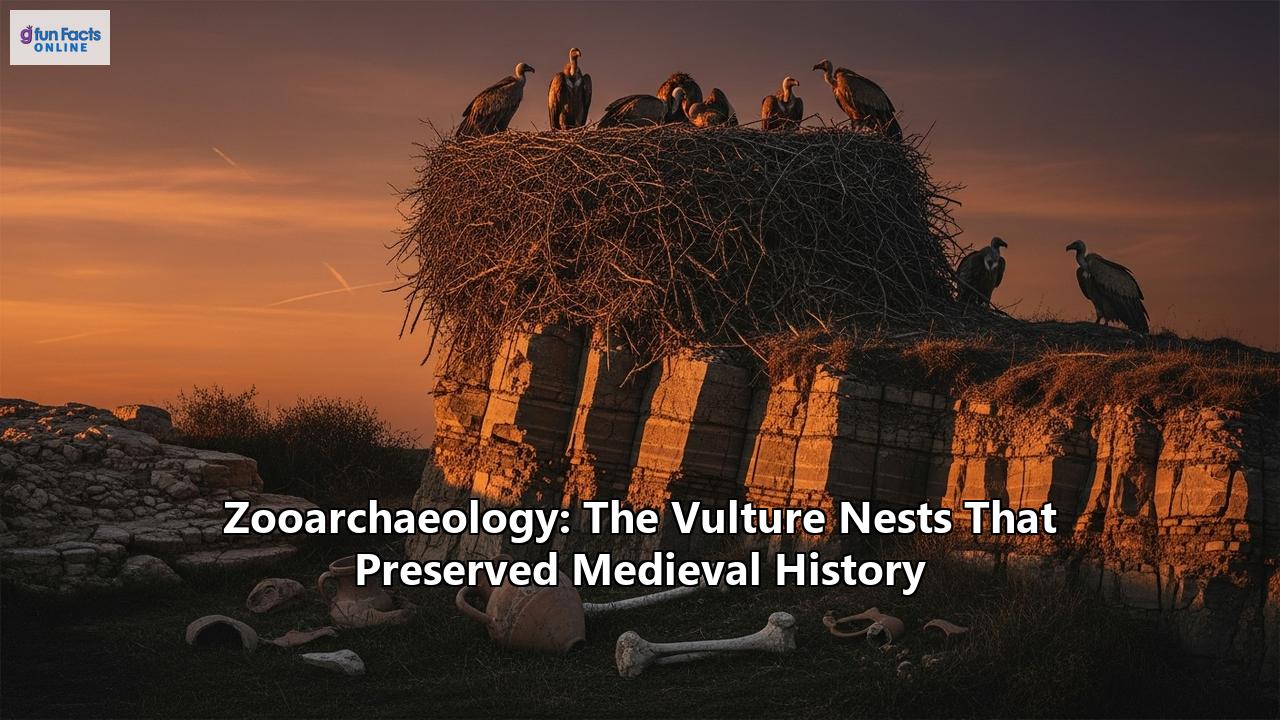Unwitting Archivists: How Vulture Nests Became Time Capsules of Medieval Spain
In the rugged, sun-beaten cliffs of Andalusia, Spain, a team of scientists rappelling into ancient, abandoned nests made a discovery that would blur the lines between ecology and archaeology. For centuries, these weren't just any nests; they were the generational homes of the Bearded Vulture (Gypaetus barbatus), a magnificent and now locally-extinct bird of prey. What the researchers found within the matted layers of branches, wool, and bone was an astonishing collection of human artifacts, a lost-and-found trove that has provided an unprecedented glimpse into the lives of people during the medieval period. This is a story of how a species of vulture, through its peculiar habits, became an unwitting curator of human history, preserving fragile relics that time and earth would have otherwise consumed.
At the heart of this tale is the discipline of zooarchaeology, the study of animal remains from archaeological sites. It is a field that seeks to understand the complex and varied relationships between humans and animals throughout history. By analyzing bones, shells, and other faunal evidence, zooarchaeologists can reconstruct past environments, diets, and economies. They can determine which animals were hunted, which were domesticated, and how they were used for food, tools, or clothing. But the discoveries in Andalusia have added a new, feathered dimension to this field, revealing that sometimes, the animals themselves are the collectors.
The Bearded Vulture, also known as the Lammergeier, is a creature of immense character. It is one of the largest Old World vultures, with a wingspan that can stretch to nearly three meters. Unlike its vulture cousins that feast on soft flesh, the Bearded Vulture is an osteophage, meaning its diet consists almost exclusively of bone. They are famed for carrying large bones high into the air and dropping them onto rocks below to shatter them into manageable, swallowable pieces. This has earned them the nickname "bone breaker." But it's not just bones these birds collect.
For generations, these vultures have built their nests in the same protected cliffside caves and ledges. Year after year, they add to the structure, creating a layered, compacted mass of materials. To soften the nest bowl for their eggs, they have a penchant for collecting soft, pliable items, which, in medieval Spain, included discarded scraps of human life. The dry, cool microclimates of these high-altitude caves then act as perfect preservation chambers, natural museums that safeguard organic materials for centuries.
It was in these accidental archives that a team of researchers, between 2008 and 2014, unearthed a treasure trove of medieval history. They found over 200 man-made artifacts tucked away within 12 different nests. The items paint a vivid picture of the world from which they were plucked. Among the discoveries were 129 pieces of cloth, 72 scraps of leather, and 25 objects woven from esparto grass. The star of the collection is a remarkably well-preserved esparto grass sandal, radiocarbon-dated to be between 650 and 750 years old. This type of footwear was common among the peasantry of medieval Spain.
The collection also included a fragment of sheep leather painted with red ochre, a crossbow bolt, and part of a slingshot, hinting at the hunting practices and daily life of the time. These artifacts, ranging from 150 to 675 years old, were likely scavenged from nearby human settlements, lost by shepherds on the mountainsides, or discarded as refuse. The vultures, in their quest for nesting materials, inadvertently salvaged these remnants of the past, creating a unique and invaluable historical record.
The significance of these findings extends beyond the individual artifacts. The nests themselves are ecological diaries. The thousands of animal bone fragments provide a long-term record of the vultures' diet, allowing scientists to reconstruct the historical abundance of both wild prey, like ibex, and domestic livestock, such as sheep and goats. This, in turn, helps to paint a picture of the past environment and the nature of human-animal interactions in the region.
Sadly, the Bearded Vulture disappeared from southern Spain between 70 and 130 years ago, a victim of hunting, habitat loss, and declining food sources. Conservation efforts are now underway to reintroduce this magnificent species to the area. The discoveries in their ancestral nests serve as a poignant reminder of their long history in these mountains. These nests are not just archaeological sites; they are a testament to the intricate and often surprising ways in which the natural world is interwoven with our own human story. They show us that history is not just buried under our feet, but sometimes, it is hidden high above our heads, in the abandoned homes of the bone-eating vultures of Andalusia. These winged archivists have given us a gift, a collection of stories bound in twigs and wool, a medieval world preserved in a vulture's nest.
Reference:
- https://en.wikipedia.org/wiki/Bearded_vulture
- https://www.ebsco.com/research-starters/zoology/bearded-vulture-or-lammergeier
- https://archaeologymag.com/2025/10/medieval-artifacts-found-in-vulture-nests-in-spain/
- https://animaldiversity.org/accounts/Gypaetus_barbatus/
- https://www.zmescience.com/science/archaeology/generations-of-bearded-vultures-stashed-human-items-including-crossbow-bolts-and-14th-century-sandals/
- https://www.livescience.com/archaeology/750-year-old-grass-shoe-discovered-in-a-vultures-nest-in-spain
- https://www.mid-day.com/news/world-news/article/bearded-vulture-nests-preserve-700-years-of-human-history-23597372
- https://www.jpost.com/archaeology/article-869478
- https://www.iflscience.com/sheep-leather-slingshots-and-a-650-year-old-shoe-abandoned-vulture-nests-hide-extraordinary-artifacts-81031
- https://www.popsci.com/environment/bearded-vulture-nest-archaeology/

